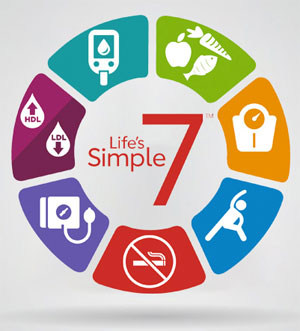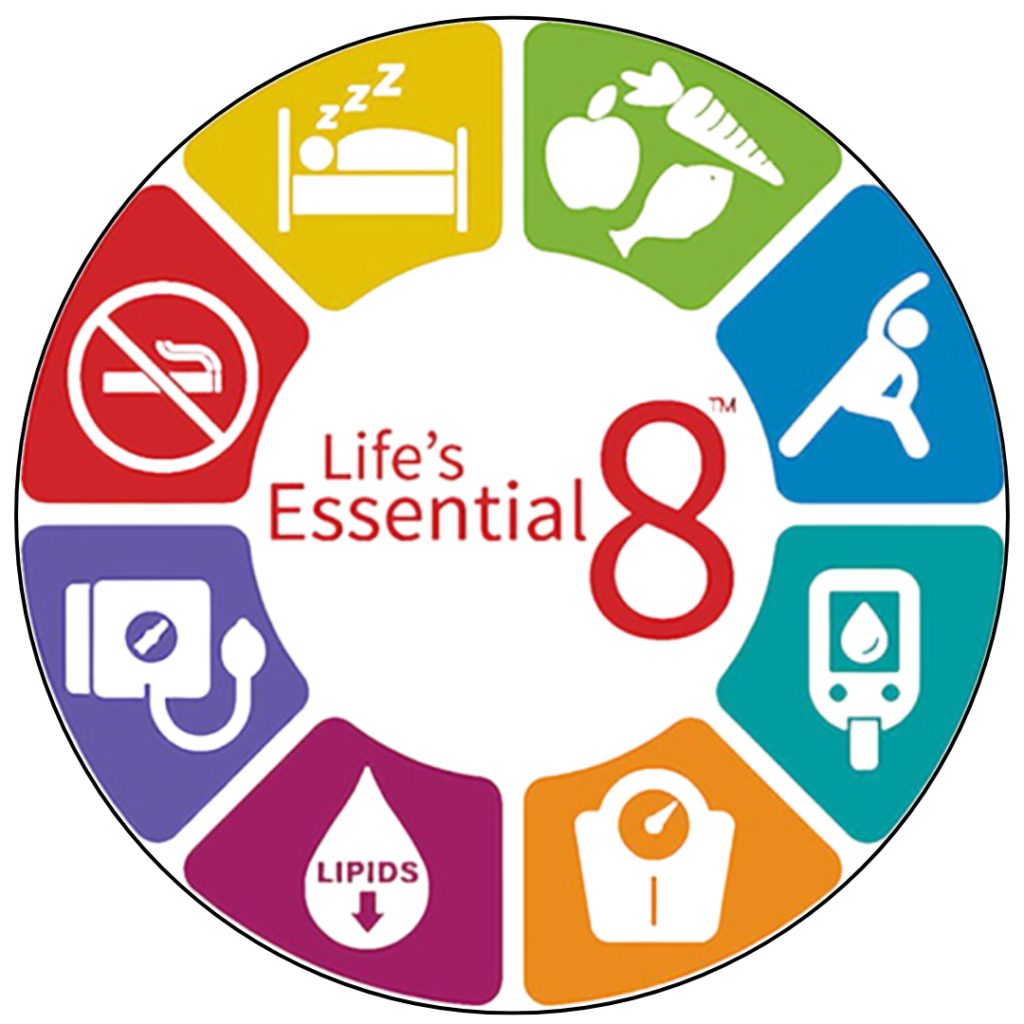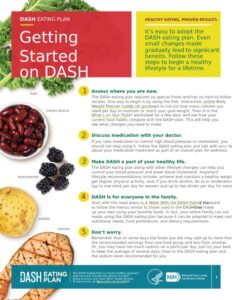Health Blog
Heart health can be improved with Life’s Essential 8

Newman Regional Health Medical Partners Cardiology encourages everyone to take a few steps to improve their heart health. Prevention is a key ingredient to a longer and healthier life. A good overall heart health plan reduces health care cost as you age and improves the quality of your life.
Life’s Essential 8 are the key measures for improving and maintaining cardiovascular health, as defined by the American Heart Association. Better cardiovascular health helps lower the risk for heart disease, stroke and other major health problems. You can get all of the information from the American Heart Association.
Life’s Essential 8 comprises two major areas:
Health Behaviors and Health Factors
Any person can make these changes, the steps are inexpensive and even simple changes will make a big difference. Start with one or two and make plans to adopt the rest of the steps to your needs.

1. Eat Better
Aim for an overall healthy eating pattern that includes whole foods, lots of fruits and vegetables, lean protein, nuts, seeds, and cooking in non-tropical oils such as olive and canola.
View or Download Fact Sheet
English (PDF) | Spanish (PDF)
2. Be More Active
Adults should get 2 ½ hours of moderate or 75 minutes of vigorous physical activity per week. Kids should have 60 minutes every day, including play and structured activities.
View or Download Fact Sheet
English (PDF) | Spanish (PDF)
3. Quit Tobacco
Use of inhaled nicotine delivery products, which includes traditional cigarettes, e-cigarettes and vaping, is the leading cause of preventable death in the U.S., including about a third of all deaths from heart disease. Roughly 40% of U.S. children ages 3-11 are exposed to secondhand smoke.
View or Download Fact Sheet
English (PDF) | Spanish (PDF)
4. Get Healthy Sleep
Most adults need 7-9 hours of sleep each night. Children require more: 10-16 hours for ages 5 and younger, including naps; 9-12 hours for ages 6-12; and 8-10 hours for ages 13-18. Adequate sleep promotes healing, improves brain function and reduces the risk for chronic diseases.
Learn how to get adequate sleep.
Learn About the Sleep Disorders Center at Newman Regional Health
View or Download Fact Sheet
English (PDF) | Spanish (PDF)
5. Manage Weight
Achieving and maintaining a healthy weight has many benefits. Body mass index, a numerical value of your weight in relation to your height, is a useful gauge. Optimal BMI is less than 25, but less than 18.5 is considered underweight. You can calculate it online or consult a health care professional.
Learn to lose or manage weight.
Learn About Medical Nutrition Therapy at Newman Regional Health
View or Download Fact Sheet
English (PDF) | Spanish (PDF)
6. Control Cholesterol
High levels of non-HDL, or “bad,” cholesterol can lead to heart disease. Your health care professional can consider non-HDL cholesterol as the preferred number to monitor, rather than total cholesterol, because it can be measured without fasting beforehand and is reliably calculated among all people.
View or Download Fact Sheet
English (PDF) | Spanish (PDF)
7. Manage Blood Sugar
Most of the food we eat is turned into glucose (or blood sugar) that our bodies use as energy. Over time, high levels of blood sugar can damage your heart, kidneys, eyes and nerves. As part of testing, monitoring hemoglobin A1c can better reflect long-term control in people with diabetes or prediabetes.
View or Download Fact Sheet
English (PDF) | Spanish (PDF)
8. Manage Blood Pressure
Keeping your blood pressure within acceptable ranges can keep you healthier longer. Levels less than 120/80 mm Hg are optimal. High blood pressure is defined as 130-139 mm Hg systolic pressure (the top number in a reading) or 80-89 mm Hg diastolic pressure (bottom number).
View or Download Fact Sheet
English (PDF) | Spanish (PDF)
Related Articles
The DASH Eating Plan as Part of a Heart-Healthy Lifestyle
The DASH eating plan requires no special foods and has no hard-to follow recipes. DASH menus allow you to plan…
Heart-Healthy Living – Manage Stress
Research suggests that an emotionally upsetting event, particularly one involving anger, can serve as a trigger for a heart attack…
Choose Heart-Healthy Foods
Heart-healthy eating involves choosing certain foods, such as fruits and vegetables, while limiting others, such as saturated and trans fats and added…



